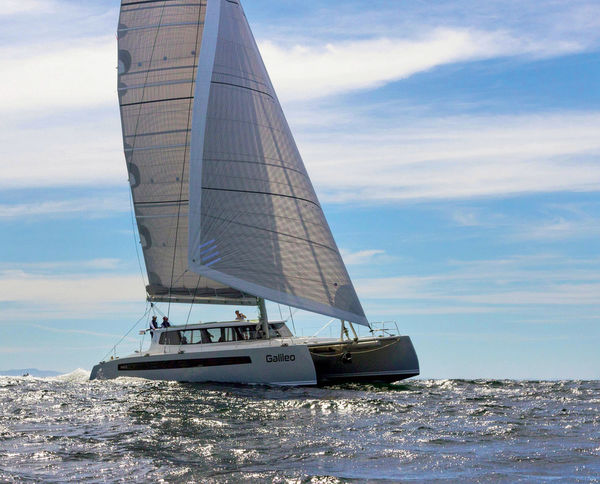
Issue #: 14
Published: August / September 2020
- Price per issue - digital : 7.50€Digital magazine
- Access to Multihulls World digital archives Digital archives
Catamaran: Catamarans represent nearly 90% of the cruising multihulls that exist, and almost all of the multihulls that are over 40 feet in length. A simple glance at our Buyer’s Guide (MW169) will confirm this. Why are they so much more successful? We take a look at a few of the reasons.
Trimaran: If there was one area where the trimaran was trying to take its revenge, it was in two sectors: that of small craft and that of very high performance multihulls... but now there’s a new player – and of course this is Neel! They’ve come along and are reshuffling the cards in a game we thought had already been played...
The catamaran’s geometry is very favorable for providing comfortable accommodation: two hulls wide enough to be habitable and the possibility of creating a large nacelle between the two. This central living area is directly connected with an enormous cockpit. As for the cabins, they are arranged at either end of each hull. This is the perfect configuration to find peace and quiet if the party is still going on in the saloon. And then there’s the fact that you can welcome friends or family in delightful conditions. For relaxation, you can count on beautiful sugarscoops, trampolines (or a forward deck) and why not a flybridge - from 40 feet and upwards. Maximum deck area that is perfectly safe – great for kids. Maneuvering in port? Having two off-center engines is very practical: you just invert the throttles and spin round on the spot! And if you suffer an engine failure, the other motor is there for you to continue on your route. The catamaran also has advantages in terms of load capacity. The two relatively load-bearing hulls - especially if their hull sections are semi-circular - are able to support a reasonable load. Some 45-foot cruising catamarans are capable of carrying nearly three tons of payload, whereas a trimaran of the same size will barely hold half that amount. If you’re heading off far away for a long time, stocking up on food and equipment with few or no restrictions is very appreciable

The fun of helming: that’s the expression that comes back on the lips of everyone who has sailed a trimaran. It’s true that most light trimarans respond wonderfully to the helm - especially if it’s tiller-steered. Their slight heel is somewhat reminiscent of a monohull in terms of feel - but the angle is limited to a few degrees. Tris are fun to helm, but also very fast. Usually lighter than catamarans, they require less sail area to lengthen their wake and post double-digit averages. If they’re equipped with a daggerboard, they keep a formidable course to windward. In terms of safety, three hulls are better than two that linked by a nacelle in the event of a hard blow: in fact, no trimarans (excepting the famous aluminum Manureva), can sink to the bottom... And as for maintenance? It’s easier of course to ...
What readers think
Post a comment
No comments to show.